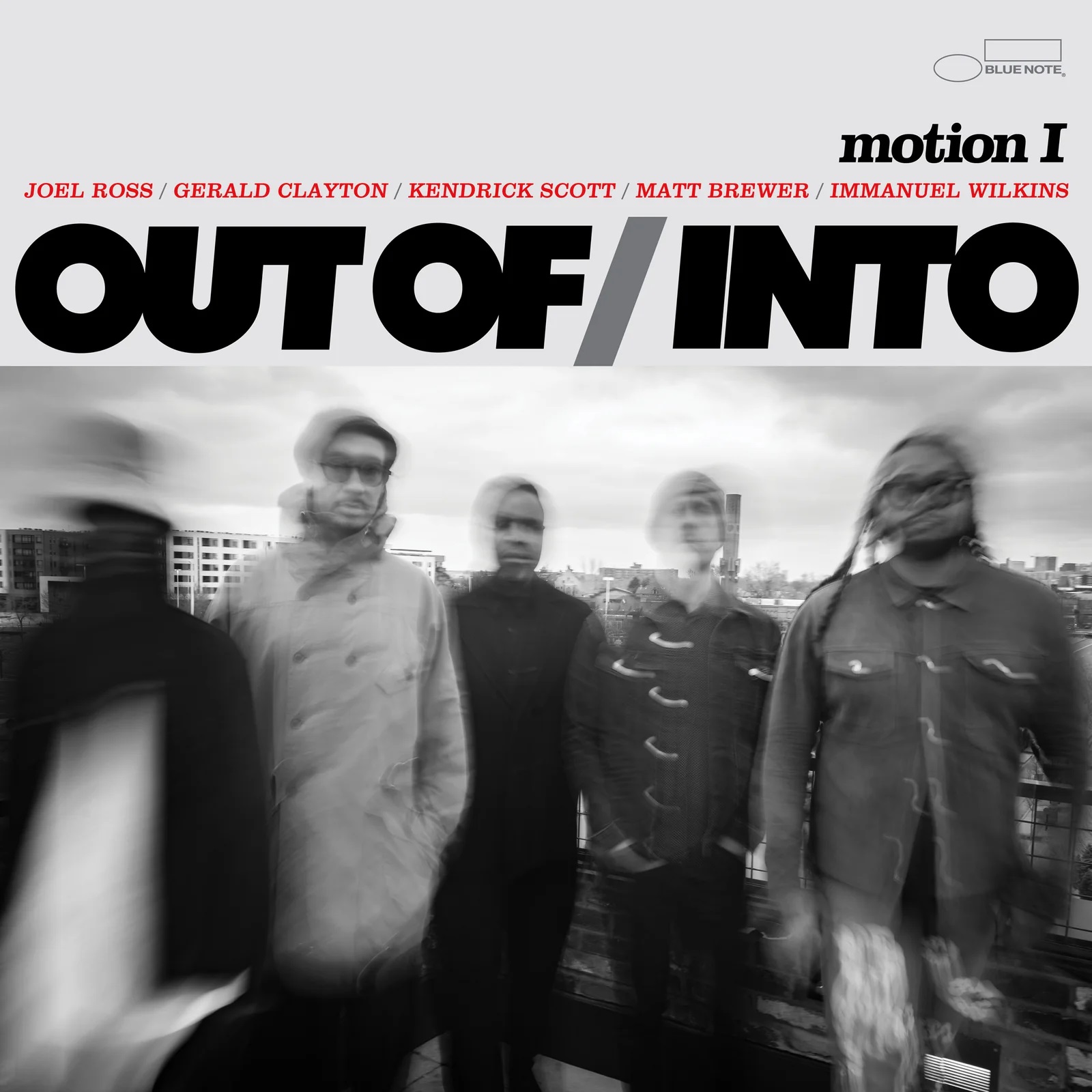Recording of the Week,Out Of/Into - Motion I
Printed From: JazzMusicArchives.com
Category: Jazz Music Lounges
Forum Name: Jazz Music News, Press Releases
Forum Description: Submit press releases, news , new releases, jazz music news and other interesting things happening in the world of jazz music (featured in home and artist page)
URL: http://www.JazzMusicArchives.com/forum/forum_posts.asp?TID=32093
Printed Date: 04 Feb 2025 at 9:45pm
Software Version: Web Wiz Forums 10.16 - http://www.webwizforums.com
Topic: Recording of the Week,Out Of/Into - Motion I
Posted By: snobb
Subject: Recording of the Week,Out Of/Into - Motion I
Date Posted: 08 Dec 2024 at 12:33pm
 Out Of/Into, formerly known as the Blue Note Quintet, is a stellar ensemble formed to commemorate Blue Note Records' 85th anniversary. Comprising pianist Gerald Clayton, alto saxophonist Immanuel Wilkins, vibraphonist Joel Ross, drummer Kendrick Scott, and bassist Matt Brewer, this collective exemplifies the label's commitment to both preserving its legacy and pushing musical boundaries. Their debut album, Motion I, showcases seven original compositions crafted during their extensive U.S. tour earlier this year. In this new "supergroup," the talents of each musician shine throughout the album, producing an abundance of telepathic interplay and stimulating improvisation.
Blue Note Records has a long-standing tradition of forming collectives to showcase their talent, assembling groups such as Out of the Blue, Superblue, New Directions, the Blue Note 7, and the Blue Note All-Stars. These groups have featured renowned musicians like Kenny Garrett, Roy Hargrove, Jason Moran, Ravi Coltrane, Bill Charlap, Robert Glasper, Lionel Loueke, and Ambrose Akinmusire. Rather than focusing solely on the label's past, these collectives consistently innovate and advance jazz in distinctive ways. Vibraphonist Joel Ross affirms this ethos, stating, “The way the collective keeps the Blue Note legacy going is by unapologetically being true to ourselves.” "Ofafrri", one of four Clayton originals on the album, opens with a tidal wave of energy, building up to the first solo, which Ross takes fearlessly before handing over to his long-time alto saxophone counterpart. The liquid tone of Wilkins’ alto and Ross’ vibraphone blend beautifully in "Gabaldon’s Glide", a reflective, meandering piece that creates space for a delving piano solo above the bubbling ensemble. What becomes abundantly clear throughout the album is the musicians’ nuanced interplay—ideas are floated rather than forced, offering the soloist avenues to explore freely. "Radical", as its title suggests, is unapologetically bold. Joel Ross delivers a fiery solo, brimming with energy, while Kendrick Scott’s accompanying hits and crashes elevate the improvisation to new heights. The album’s pacing is balanced by the inclusion of "Second Day" at the midpoint—a lush, washy ballad with a buoyant melody delivered fluently by saxophone and vibraphone. Wilkins’ golden alto tone and Ross’ reverberant vibraphone further enhance the composition’s tranquil theme. "Aspiring to Normalcy", the album’s longest track, composed by Matt Brewer, showcases intricate dialogue between Clayton, Brewer, and Scott as a trio within the ensemble. It weaves a complex tapestry of sound, allowing the musicians to explore nuanced textures through extended improvisation and collaborative interplay. "Synchrony" opens with an impassioned drum solo, setting an intense mood that builds further with blistering solos, while "Bird’s Luck" closes the album with subtle, subtonal colors that complement its relaxed, sauntering nature. The synergetic tone of Motion I highlights the ensemble's cohesiveness and its intricate, spontaneous moments. While individual solos are present, they are seamlessly integrated into the compositions rather than adhering to the conventional head-solo-solo-solo-head format. Firmly rooted in post-bop but interwoven with experimental elements, this debut album showcases exceptional musicianship and delivers a lean, progressive take on contemporary jazz that leaves listeners eager for more. https://www.prestomusic.com/jazz/products/9727366--motion-i" rel="nofollow - Motion IOut Of/Into Available Formats: CD, MP3, FLAC/ALAC/WAV, Hi-Res FLAC/ALAC/WAV
Dan Spirrett from https://www.prestomusic.com |